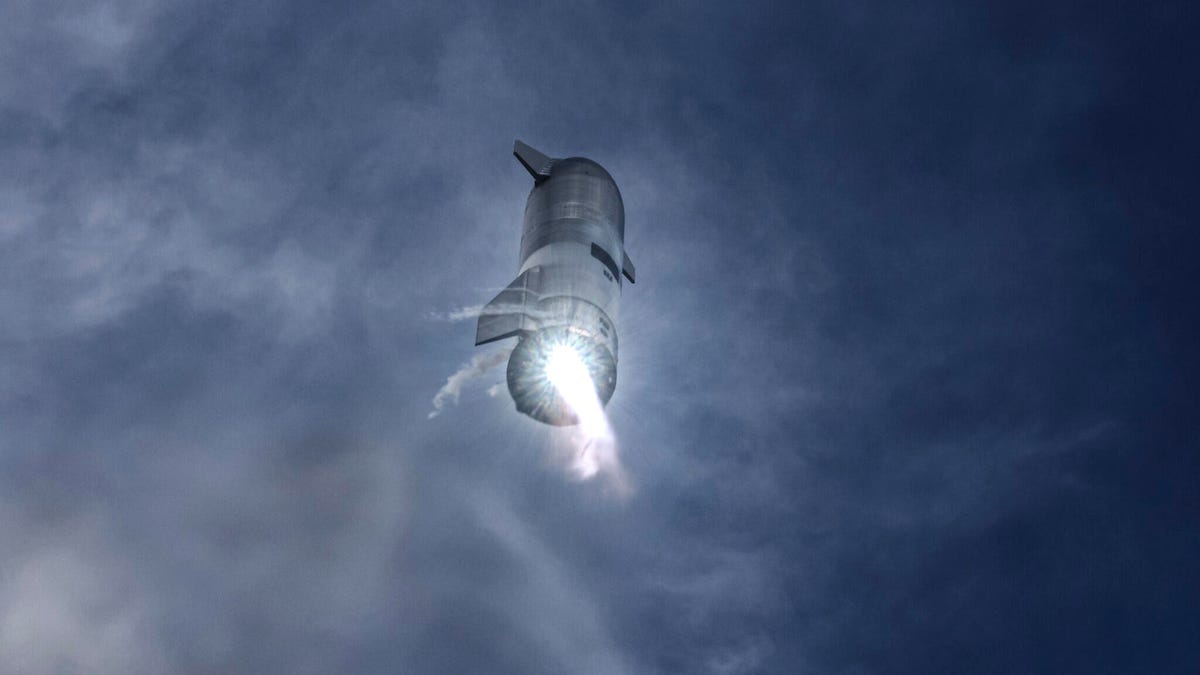Elon Musk reveals what made SpaceX's Starship SN11 prototype explode
SpaceX has sent four prototypes of its eventual Mars rocket to big-booster heaven.

Starship prototype SN10 comes in for a landing.
The latest SpaceX Starship prototype, called SN11, met an explosive end last week, like its three predecessors. But the conditions around the big boom were uniquely mysterious, as dense fog and malfunctioning cameras obscured the details of its ultimate fate.
Now company founder and CEO Elon Musk has some details on what happened in SN11's final moments. On Twitter Monday morning, Musk attributed the explosion to a fuel leak.
"A (relatively) small CH4 leak led to fire on engine 2 and fried part of avionics, causing hard start attempting landing burn in CH4 turbopump," he wrote.
Ascent phase, transition to horizontal & control during free fall were good.
— Elon Musk (@elonmusk) April 5, 2021
A (relatively) small CH4 leak led to fire on engine 2 & fried part of avionics, causing hard start attempting landing burn in CH4 turbopump.
This is getting fixed 6 ways to Sunday.
SN11 launched from the company's Starship development center in Texas on March 30 with zero visibility on the ground. Everything went smoothly as the vehicle -- final versions of which Musk hopes to send to the moon and Mars in the coming years -- ascended to about 6.2 miles (10 kilometers) and then fell back to Earth. After it made its trademark flip maneuver in preparation for a landing burn and soft touchdown, onboard cameras froze during the SpaceX livestream.
Other remotely operated livestream cameras pointed at the landing pad from nearby captured an orange glow in the fog followed by a hell storm of debris raining down on the exclusion zone around the pad.
See how lucky our cameras were at #SN11’s launch in 4K slow mo with insane audio... we truly dodged a bullet 😳 @considercosmos’ video is premiering in 20 minutes, so check out the insane shots & enjoy some behind the scenes of launch day! https://t.co/6mzdQ2o9Be @SpacePadreIsle pic.twitter.com/pQsldyq8jz
— Everyday Astronaut (@Erdayastronaut) April 2, 2021
Two earlier prototypes, SN8 and SN9, both exploded on impact thanks to a hard landing. SN10 stuck the landing, but then exploded on the landing pad a few minutes later. SN11 appears to be the first to explode just before impacting the ground.
So we've now seen a nice sampling of the ways one of these prototypes can end itself during the landing phase. There's reason for optimism that the next attempt will go better.
SpaceX will jump ahead to SN15, which reportedly incorporates a slew of upgrades Musk is excited enough about that he opted to essentially throw out SN12, SN13 and SN14.
SN15 is already assembled and being readied for testing ahead of its debut. The hope is that one of the upcoming prototypes will not only survive the landing, but allow the company to proceed toward attempting the first orbital flight for Starship as soon as June.
Musk says he certainly doesn't expect a repeat of the critical leak that led to the shrapnel-scattering anomaly seen last week.
"This is getting fixed six ways to Sunday," he tweeted.
Follow CNET's 2021 Space Calendar to stay up to date with all the latest space news this year. You can even add it to your own Google Calendar.

